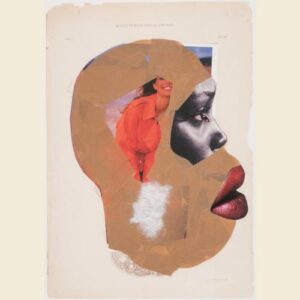Today’s blog post comes from Angela Brown, class of 2016 and Art Center Student Docent.

Salvador Dali, Spanish, 1901-1989.
Published by Maecenes Press-Random House, NY
Upon learning that this year’s Founder’s Day theme would be Alice in Wonderland, I couldn’t help but consider how stories from childhood remain with us throughout our
lives. I wanted to explore the way the significance and meaning of these stories shift according to new experiences and perceptions of the world and our selves. Fortunately, the collection at the Frances Lehman Loeb Art Center offered me an opportunity to explore this from an artistic and art historical perspective. Vassar owns a special edition of Alice in Wonderland illustrated by Salvador Dalí and I wondered how this merging of “high art” with a familiar children’s story would affect my interpretation of the illustrations. The book is copy 1,090 out of only 2,500 copies printed by Maecenas Press—a division of Random House—in 1969. It includes one color etching and twelve photolithographs of Dalí’s original illustrations. The originals were made with vivid watercolor, gouache, and ink and often included cut-outs of butterflies, caterpillars, cards, and other images. Interestingly, each printed illustration contains a different
lithographic remarque, making the signature itself an area of aesthetic interest within the compositions.

Salvador Dali, Spanish, 1901-1989. Published by Maecenes Press-Random House, NY
The illustrations allude to the text while utilizing a juxtaposition of spontaneity and premeditation that adds a new visual layer to the themes within the story. Certain motifs appear in all of the images, most notably that of Alice herself holding some sort of wire or string in an arc above her head. The shadow she casts mimics this circle and seems to represent a common lens through which to view the scenes; this lens distorts “reality” and forces the viewer to reconsider the meaning behind certain objects, colors, and shapes. Loosely applied watercolor creates a dreamy and fluid atmosphere in stark contrast to black ink splatters that are sometimes slightly representational (a bird for example), but often add a certain dynamic immediacy. For example, in “Advice from a Caterpillar,” black ink splatters explode from the legs of a bigger, surrealistic caterpillar placed directly next to a cut-out of a more realistic caterpillar seated on a large mushroom. Alice and her shadow observe from the background, and the setting, although a simple silhouette, resembles the shores of Port Lligat in Spain where Dalí lived. This same landscape can be seen in many of his more famous works including The Sacrament of the Last Supper, which distorts perspective in the foreground while maintaining a clear landscape and horizon line in the background.

Salvador Dali, Spanish, 1901-1989.
National Gallery of Art. 1955. Oil paint.
Another one of the Alice in Wonderland illustrations does this as well. “The Queen’s Croquet Ground” presents two scaled, sea-creature-like figures, one holding a queen of
hearts card and the other holding a jack of diamonds. The figures dominate the page and are overwhelmingly larger than Alice, who is shown small and in yellow in the bottom
left-hand corner. These figures could be seen to symbolize a complex power struggle or game of domination, but the viewer cannot be sure. However, Dalí includes perspectival
lines reaching back to that familiar and stable landscape suggesting that the uncertain exists within a common framework that we must always question and find new ways to observe just as these illustrations push us to reexamine how stories from our childhood
can hold deeper implications for our lives now
.





All the images are so interesting.